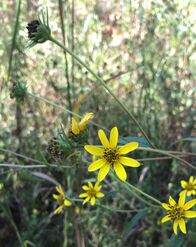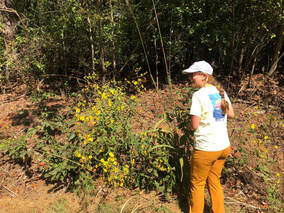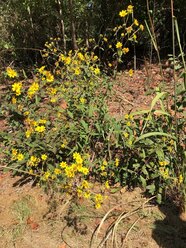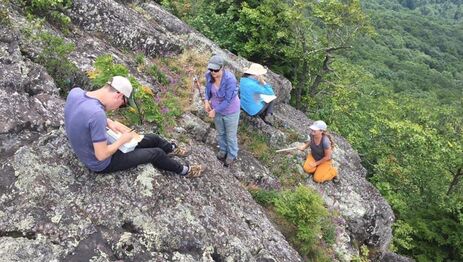Population Monitoring
|
A population is a group of individuals of the same species that have the ability to genetically interact and inhabit a defined geographic area.
Population monitoring involves consistent and repeated observations to detect, measure, assess, evaluate, and draw conclusions as to how species and ecosystems are changing through time and space. Monitoring is a key component of rare plant conservation, required under several federal acts, for endangered, threatened, and rare species. Monitoring is also a key component of the adaptive management process where by demographic data inform management practices.
|
Qualitative Data Metrics
|
Qualitative data monitoring can provide rapid assessments of species populations.
|
Demographic Monitoring
Assessment of detailed changes in population throughout the lifecycle; measures germination and mortality rates, growth, size, density, and distribution.
- Population Viability Analysis (PVA): Mapping individual plants and marking all stages of the plant life cycle to construct a model for future population viability assessment. These analyses also allow forecasting time until extinction and modeling impact of management efforts.
- Single age/stage class investigation: Measuring a few stages of the lifecycle such as seedling survival or longevity of adults.
- Demographic structure: A measurement taken at one time to assess the distribution of individuals in age or stage classes (seedlings, juveniles, non-reproductive adults, reproductive, and old/dying).
Habitat and Protected Area MonitoringDetection or measurement of changes in focus habitat through repeated observations and recordings of the specific ecosystem from a previous status.
For more detailed information on methods for population monitoring check out this technical reference.
|
What to Bring into the FieldClipboard
Standardized guidelines and recording sheets Pencil Rite in the Rain notebook or paper Hand lens Plant ID reference Ruler and measuring tape Compass |
Sources and Resources
Elzinga, L. Caryl; Salzer, W. Daniel; Willoughy, W. John. Measuring & Monitoring Plant Populations. BLM Technical Reference 1730-1.
Vitt, Pati; Tienes, Melissa; Skogen, Kriss; Havens, Kayri. Optimal Monitoring of Rare Plant Populations II: Data Collection and Analysis. USDA Forest Service.
Vitt, Pati; Tienes, Melissa; Skogen, Kriss; Havens, Kayri. Optimal Monitoring of Rare Plant Populations II: Data Collection and Analysis. USDA Forest Service.





